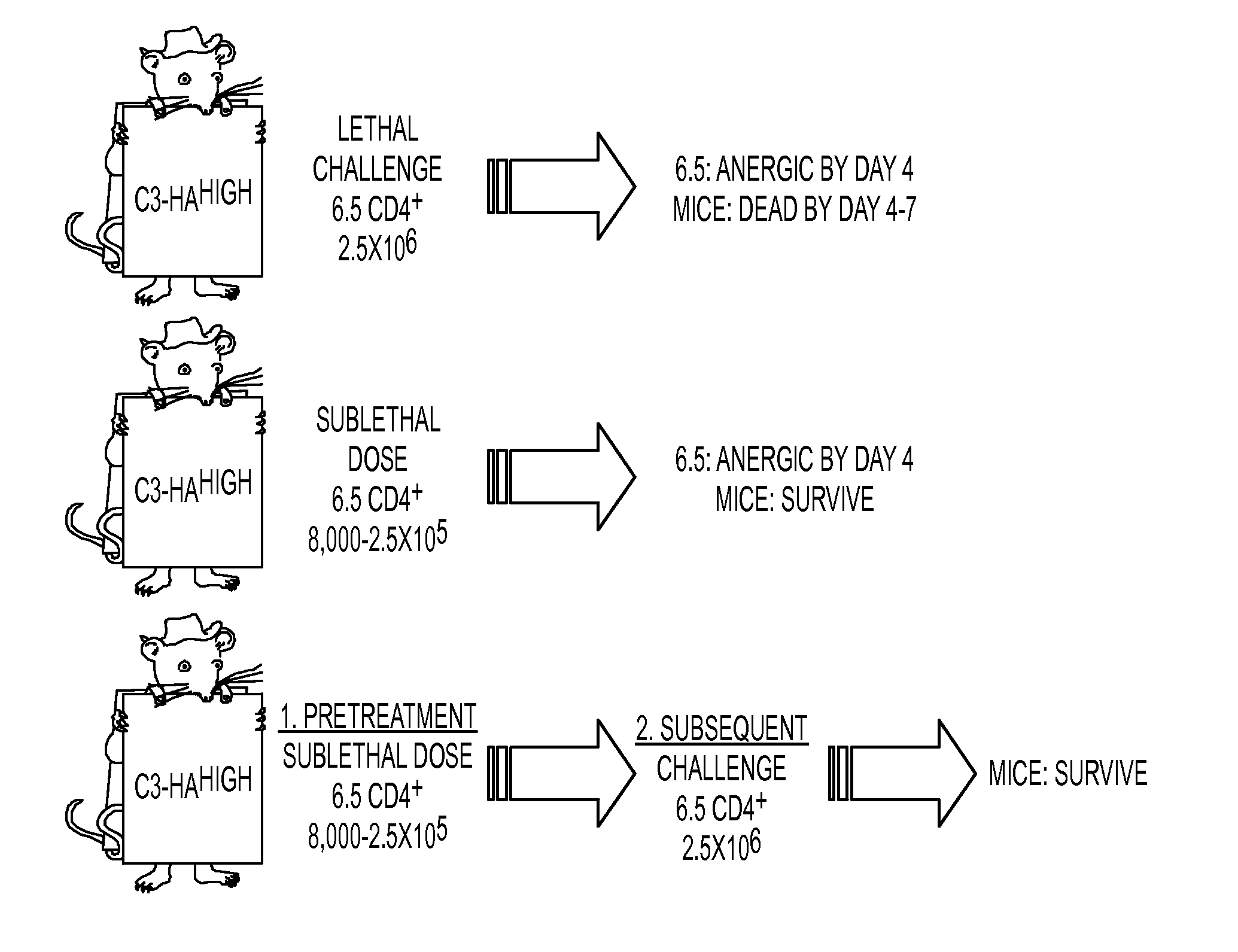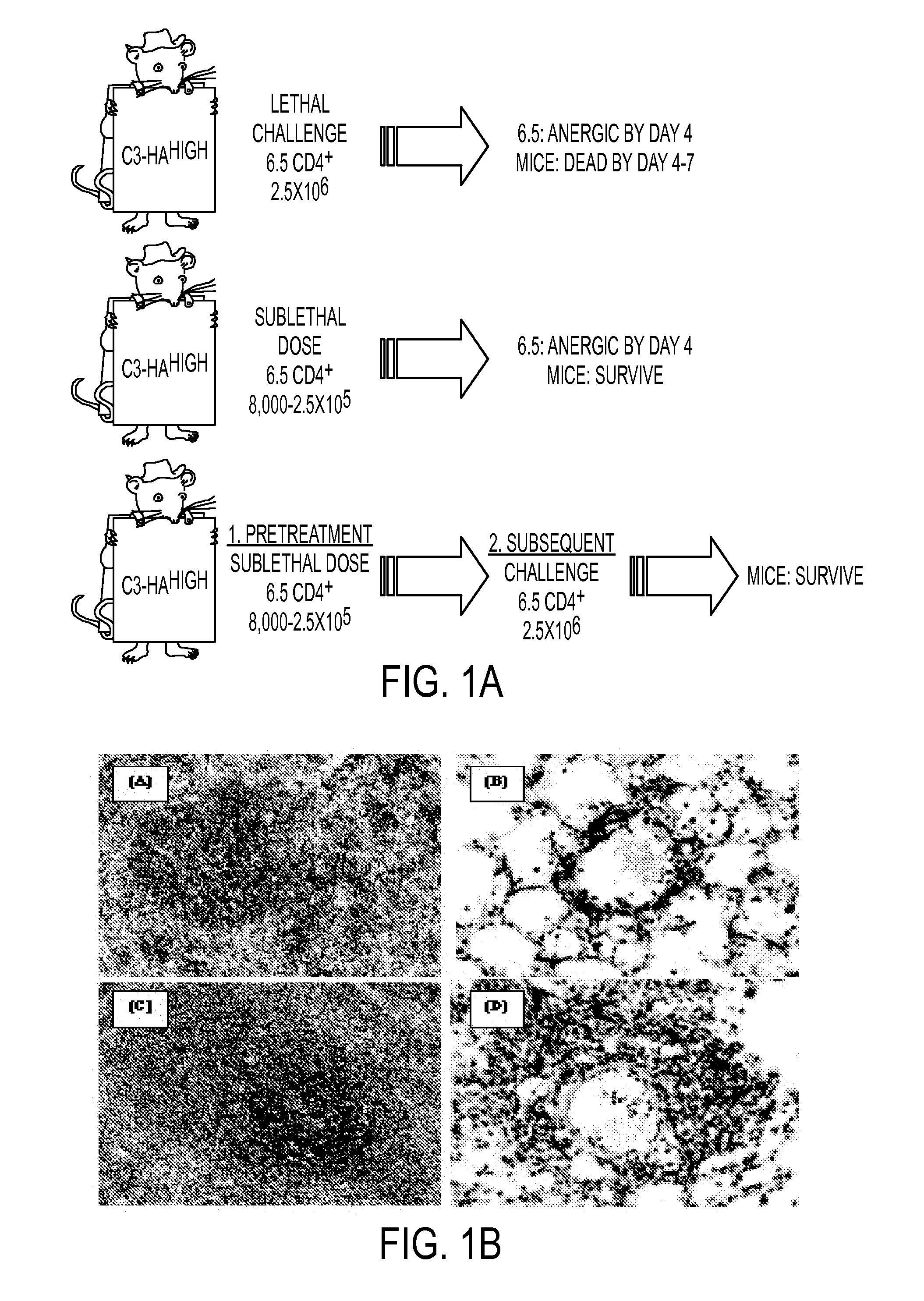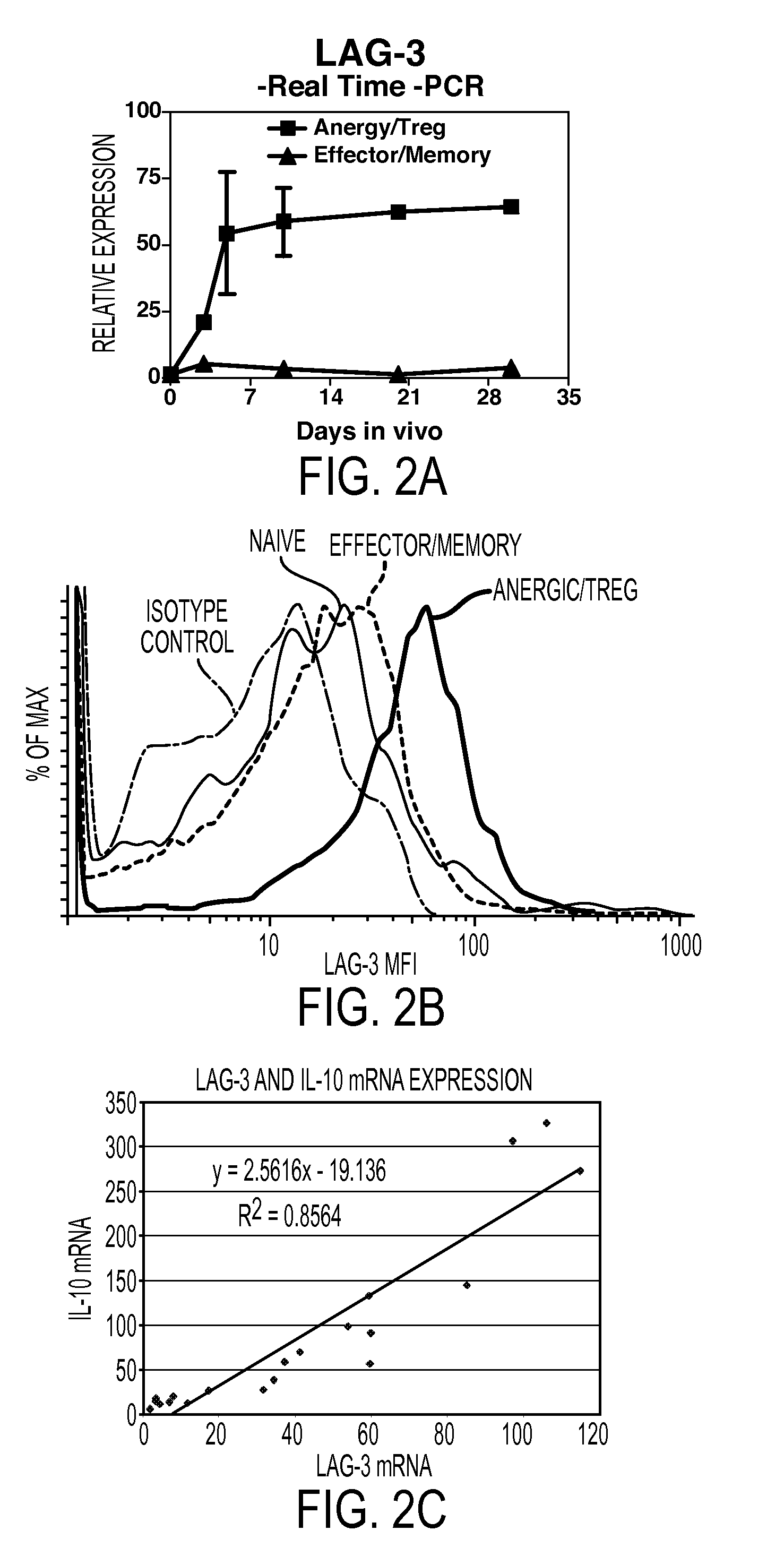Anti-cancer vaccine composition
a vaccine and composition technology, applied in the field of therapeutic and drug screening methods, can solve the problems of completely effective, deleterious t-cell activity, and limited success of adoptive immunotherapy, and achieve the effects of decreasing increasing the concentration of cd223 in the mammal, and increasing the number of t cells in the mammal
- Summary
- Abstract
- Description
- Claims
- Application Information
AI Technical Summary
Benefits of technology
Problems solved by technology
Method used
Image
Examples
example 1
Negative Regulation of T Cell Homeostasis by LAG-3 (CD223)
[0081]The following example shows that LAG-3 (CD223) negatively regulates CD4+ and CD8+ T cell homeostasis, supporting its identification as a novel therapeutic target for accelerating T cell engraftment following bone marrow transplantation.
[0082]Wild type C57BL / 6 mice have a constant number of αβ+ T cells from 4 to 52 weeks of age. As previously reported, young 4 week old LAG-3− / − mice have normal T cell numbers. Miyazaki, T. et al., Science 272: 405-408 (1996). In contrast, the number of αβ+ T cells in LAG-3− / − mice steadily increases from 3 months of age to numbers ˜2-fold higher than wild type mice. This difference is highly significant given the tight homeostatic regulation of αβ+ T cell number evidenced by the very low standard deviation. Both CD4+ and CD8+ cells were increased in LAG-3− / − mice but the CD4:CD8 ratio was unchanged. Similarly, LAG-3− / − mice transgenic for the OT-II TCR (ovalbumin 326-339-specific, H-2Ab-...
example 2
Materials and Methods
[0090]This example provides the experimental methods and materials for example 1.
[0091]Mice: The following mice were used: LAG-3− / − [obtained from Yueh-Hsiu Chen, Stanford University, Palo Alto, Calif., with permission from Christophe Benoist and Diane Mathis, Joslin Diabetes Center, Boston, Mass.; Miyazaki, T. et al., Science 272: 405-408 (1996)]; C57BL / 6J [Jackson Labs, Bar Harbor, Me.]; B6.PL-Thy1a / Cy (Thy1.1 congenic) [Jackson Labs]; RAG-1− / − [Jackson Labs, Bar Harbor, Me.; Mombaerts, P. et al., Cell 68: 869-877 (1992)]; MHC class II− / − [provided by Peter Doherty, St. Jude Children's Research Hospital, Memphis, Tenn.; Grusby, M. J. et al., Science 253:1417-1420 (1991)]; MHC class I− / − / II− / − [Taconic, Germantown, N.Y.; Grusby, M. J. et al., Proc. Natl. Acad. Sci. U.S.A 90: 3913-3917 (1993)]; OT-II TCR transgenic mice [provided by Stephen Schoenberger, La Jolla Institute for Allergy and Immunology, La Jolla, Calif., with permission from William Heath, Walter a...
example 3
Induced Treg Cells with Potent Regulatory Activity
[0097]In order to identify Treg specific molecules, we performed a differential gene expression analysis of antigen-specific T cells differentiating to either effector / memory cells in response to viral infection or Treg cells upon encounter of cognate antigen as a self-antigen. This analysis revealed that the LAG-3 gene was selectively upregulated in Treg cells. The physiologic role of LAG-3, an MHC class II binding CD4 homologue, has not been clearly elucidated. Several in vitro studies have suggested that LAG-3 may have a negative regulatory function (Hannier et al., 1998; Huard et al., 1994; Workman et al., 2002a; Workman et al., 2002b). Here we show that membrane expression of LAG-3 selectively marks Treg cells independently of CD25 and that LAG-3 modulates both the in vitro and in vivo suppressive activity of Treg cells.
[0098]In order to study differences between T cell effector / memory and tolerance induction, we have utilized a...
PUM
| Property | Measurement | Unit |
|---|---|---|
| concentration | aaaaa | aaaaa |
| concentration | aaaaa | aaaaa |
| pH | aaaaa | aaaaa |
Abstract
Description
Claims
Application Information
 Login to View More
Login to View More - R&D
- Intellectual Property
- Life Sciences
- Materials
- Tech Scout
- Unparalleled Data Quality
- Higher Quality Content
- 60% Fewer Hallucinations
Browse by: Latest US Patents, China's latest patents, Technical Efficacy Thesaurus, Application Domain, Technology Topic, Popular Technical Reports.
© 2025 PatSnap. All rights reserved.Legal|Privacy policy|Modern Slavery Act Transparency Statement|Sitemap|About US| Contact US: help@patsnap.com



